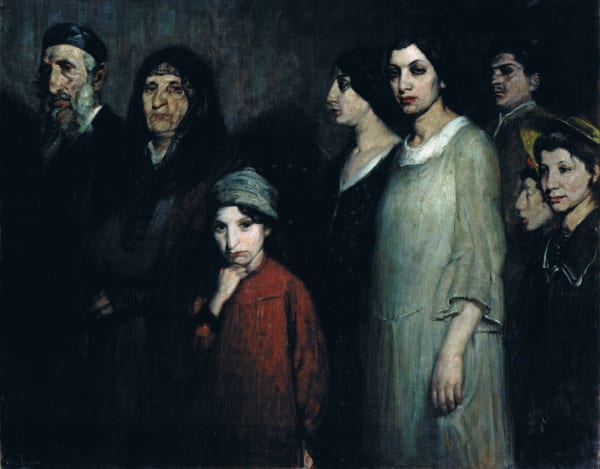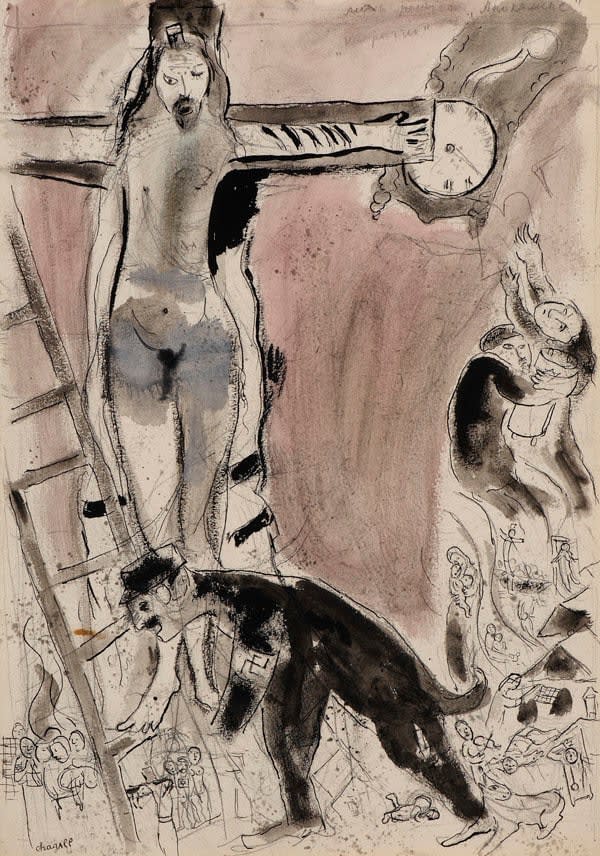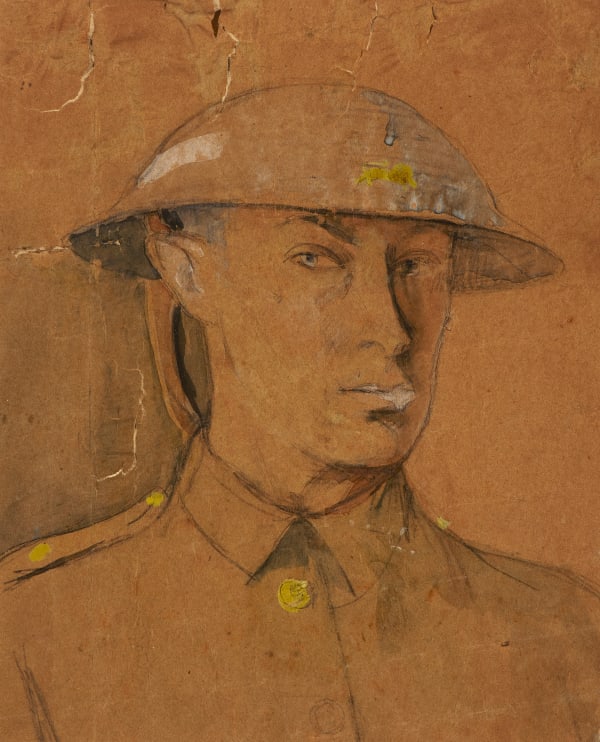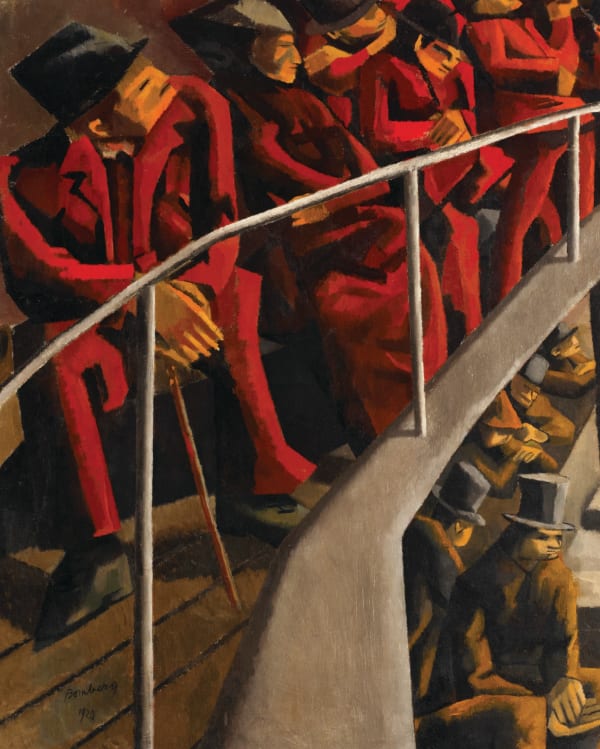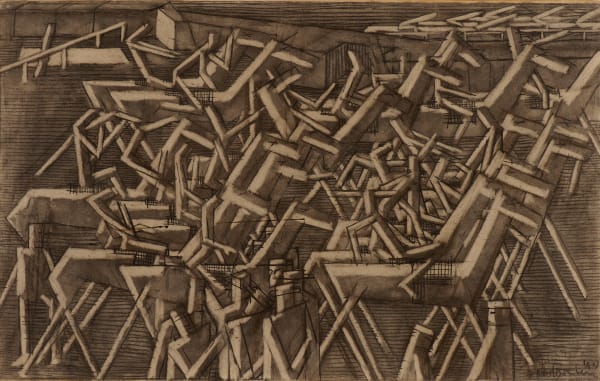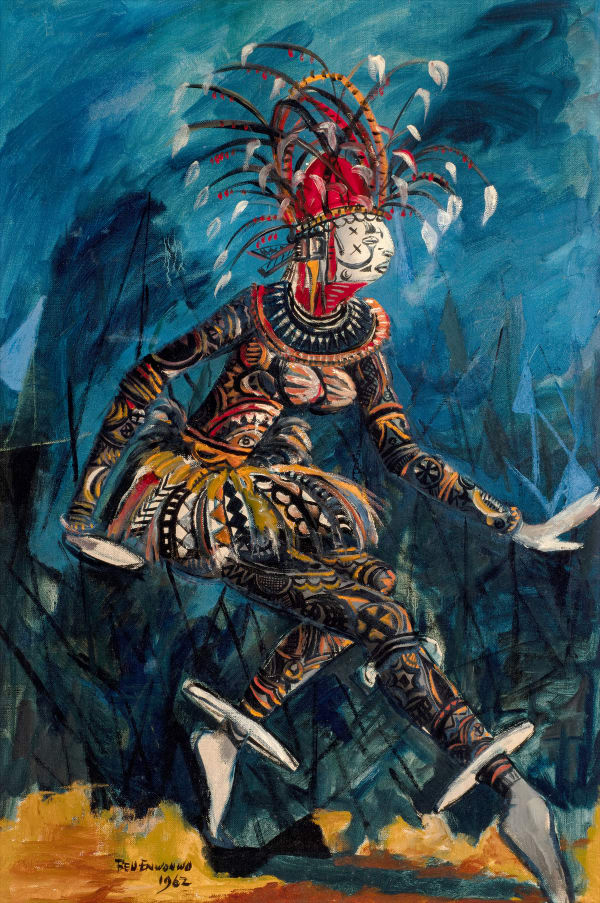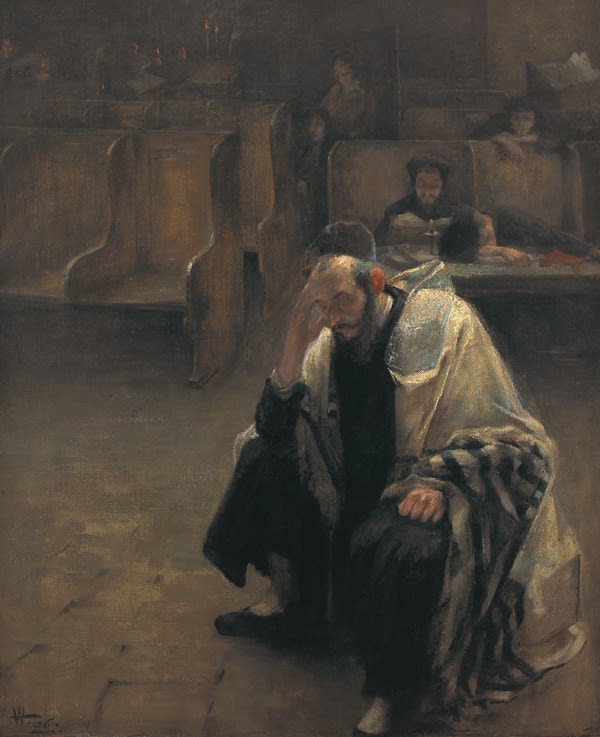-
Visit our Ben Uri collection
hereWe hold Europe’s only collection dedicated to Jewish, refugee and immigrant artists comprising some 880 works by some 380 artists from some 45 countries of birth.
The Pre-eminent Collection includes important examples by Frank Auerbach, Martin Bloch, David Bomberg, Marc Chagall, Jacob Epstein, Eva Frankfurther, Mark Gertler, George Grosz, Josef Herman, Peter Howson, Leon Kossoff, Max Liebermann, Marie-Louise von Motesiczky, Isaac Rosenberg, Kurt Schwitters, Chaïm Soutine, Tam Joseph, Clare Winsten and Alfred Wolmark, among others.
The Core Collection includes fine works by Jankel Adler, Jacob Bornfriend, Sonia Delaunay, Dodo (Dörte Bürgner), Hans Feibusch, Max Sokol, Elisabeth Tomalin, and many others, supported by a wide-ranging body of reference works.
ART, IDENTITY AND MIGRATION
The 20th century was notable for many migrations to Great Britain. The turn of the century was the turn of east European Jews finding refuge here from the Russian pogroms. The 1930s and 1940s saw central European Jews escaping Nazi tyranny before and during the Second World War. The British Nationality Act of 1948 gave citizens of the British colonies status and the right to settle in the UK, encouraging the mass migration of people from the Caribbean to Britain between 1948 and 1970, who were referred to as the Windrush Generation. Following the expulsion of all 50,000 Gujarati Indians from Uganda under the dictator Idi Amin between 1965-1972, many Ugandan Asians came over to Britain. Likewise, the independence of India and Pakistan from British rule in 1947 saw a steady flow of émigrés arriving to Britain, as well as an influx of refugees from Hungary following the defeat of the Hungarian Revolution in 1956. Since the expansion of the EU in 2004, the UK has accepted immigrants from Central and Eastern Europe, Malta and Cyprus.
Today, the phrase ‘émigré’ may have a different meaning. So many of us choose to live in other countries for pleasure, work and study, but there remains the same challenge of integration and settling in a foreign land.
It is this study of art, migration and identity that lies at the heart of Ben Uri’s work. We continue to explore the artistic transition of artists today as we have for over a century, and since 2001 irrespective of nationality and religion.
The work and influence of immigrant artists are as important today as it was a century ago when the Jewish émigrés including the Whitechapel Boys, and often overlooked the Whitechapel Girls, made their mark on British Modernism. The first home to so many of the immigrants then was Whitechapel and the East End of London where Ben Uri was founded in 1915, and little has changed since as so many new communities find a home, albeit cramped and impoverished, in the same areas.
This twenty year focus is the genesis of the Ben Uri Research Unit for the study and recording of the Jewish, refugee and immigrant contribution to British visual culture since 1900.
-
Ben Uri Local to Global Exhibition: Highlighting Collection Acquisitions from 2000 to 2025
-
SEARCH THE COLLECTION
You can search and view the Pre-eminent and Core online and search by artist surname, country of origin, decade of birth or death, émigré, gender, object type, materials, techniques and key word tags.
View and search the collection on benuricollection.org.uk
-
Some Highlights of the collection
-
 Kurt Schwitters, für Frau Fränkel, 1927
Kurt Schwitters, für Frau Fränkel, 1927 -
 Victor Hageman, The Emigrants, c. 1910
Victor Hageman, The Emigrants, c. 1910 -
 Marc Chagall, Apocalypse en Lilas, Capriccio, 1945-47
Marc Chagall, Apocalypse en Lilas, Capriccio, 1945-47 -
 Mark Gertler, Rabbi and Rabbitzin, 1914
Mark Gertler, Rabbi and Rabbitzin, 1914
-
 Josef Herman, Refugees, c. 1941
Josef Herman, Refugees, c. 1941 -
 Isaac Rosenberg, Self-Portrait in Steel Helmet, 1916
Isaac Rosenberg, Self-Portrait in Steel Helmet, 1916 -
 Frank Auerbach, Mornington Crescent, Summer Morning II, 2004
Frank Auerbach, Mornington Crescent, Summer Morning II, 2004 -
 Jankel Adler, Mother and Child II, 1941
Jankel Adler, Mother and Child II, 1941
-
 Tam Joseph, The Hand Made Map of the World, 2013
Tam Joseph, The Hand Made Map of the World, 2013 -
 David Bomberg, Ghetto Theatre, 1920
David Bomberg, Ghetto Theatre, 1920 -
 Arthur Segal, Halen, La Ciotat (Harbour Scene), 1929
Arthur Segal, Halen, La Ciotat (Harbour Scene), 1929 -
 Martin Bloch, House in Varengeville, Normandy, 1939-43
Martin Bloch, House in Varengeville, Normandy, 1939-43
-
-
OTHER WAYS TO ACCESS THE COLLECTION
The Collections are now accessible, not just on our own website, but also extensively on the online platforms of Art UK, Google Arts and Culture, Artsy online gallery, Europeana archive, and extensively on Social Media sites including Instagram, Facebook and Pinterest. In total, there are some 10,000 different representations of works from our collection available across the internet which are designed to link back to this virtual museum.
You may also see works from the collection in one of Ben Uri’s many touring exhibitions and our extensive loan programme to other museum exhibitions. You can find out more on our Exhibitions page on our Ben Uri Collections site. -
WHY DO WE HAVE OTHER WAYS OF ACCESSING THE COLLECTION?
This expansive virtual museum and our wide engagement in sharing our collection across some 20 digital platforms is Ben Uri’s response to a changed and ever-changing local and global world around us.
The future is Digital and this virtual museum is our long-term commitment to wide and diverse engagement about our collections and their meaning and impact on society.
Ben Uri actively, and thankfully unsuccessfully, searched for a new centrally located building of appropriate size since reopening in 2002. Finding an affordable site in the right location proved an impossible task, as the Trustees were acutely aware that acquiring a site in the wrong location was fatal. Between 2016 and 2017 we negotiated a collecting, exhibiting and academic partnership with a synergistic university to maximise and enhance the Ben Uri museum strengths, but ultimately it was not to be. The Board undertook a further extensive options analysis and published our 2019 Sustainability and Public Benefit Strategic Plan in October 2018 which addressed the future over many decades ahead rather than the standard 10-year plan which is the norm.
Pivotal to the many enlightened changes to traditional long-standing museum practices embodied in the strategy is this commitment to addressing tomorrow's challenges today rather than today's challenges tomorrow.
-
Thank you
On behalf of you, our public, everyone at Ben Uri offers a huge Thank You to all those who have made our long list of important acquisitions since 2002 possible as they have transformed the quality and width of our collection. We pay special tribute to Art Fund, The National Lottery Heritage Fund, ACE/V&A Purchase Grant Fund and those philanthropists who share our belief in building a world-class collection that represents the focus of the Ben Uri Research Unit — illustrating the Jewish, refugee and immigrant contribution to British visual arts since 1900.
Please check out, join and enjoy the benefits of free entry to over 200 museums and 50% off admission to feature exhibitions through their National Art Card. Discover more about the invaluable help Art Fund provides, as a registered charity, to museums like Ben Uri in acquiring great works that enhance our collections for you to enjoy. Equally, please also check out how every lottery ticket you buy helps museums like Ben Uri, and the wider social infrastructure of our society, at heritagefund.org.uk.
-

-
Ben Uri's new AI inclusive disclaimer:"All content of the Ben Uri Research Unit is designed for non-commercial, educational and critique user purposes and shall not be used in any form for the purpose of training artificial intelligence or machine learning technology. In accordance with Article 4(3) of the DSM Directive 2019/790, Ben Uri expressly reserves all content from the text and data mining exception."
Be the first to know – Sign Up
Subscribe to our newsletter and be the first to know about everything new at Ben Uri, including the constantly evolving and expansive online content across our exhibitions, collection and research.
We value and respect your privacy. Your personal data will be kept private and processed securely, according to our Privacy Policy. If you change your mind anytime, you can unsubscribe directly when receiving a mail from us (the link will be at the bottom of the email) or contact us.
* denotes required fields
This website uses cookies to improve your experience. If you are not happy with this, you can opt-out below.


